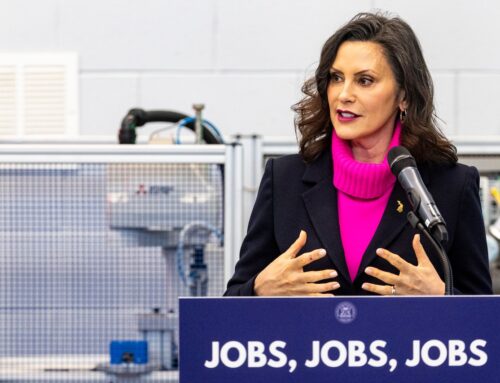Opinion: Systemic transportation underfunding requires new investment model
July 27, 2025
This is one of two op-eds published today on the upcoming special session. To read the other op-ed, authored by House Republican Leader Christine Drazan, click here.
Susan McLain
For The Oregonian/OregonLive
McLain, a Democrat, represents District 29-Forest Grove, Cornelius and Hillsboro in the Oregon House. She serves as co-chair of the Joint Committee on Transportation.
Transportation is our most fundamental public service, fueling everything from economic prosperity to social equity. All communities across the state depend on a safe, resilient and multi-modal system. However, Oregon has underfunded its transportation system for decades, and, as a consequence, the Oregon Department of Transportation now lacks the resources to fulfill its core mission of maintaining our roads, bridges and other infrastructure.
The crisis is systemic. Oregon lacks ways of raising sufficient revenue for maintenance, with Oregonians paying some of the lowest transportation-related fees in the nation. We lack a diverse set of funding streams and rely predominantly on the gas tax for revenue, which is expected to decline this biennium as fuel efficiency and electrification increase. Rising inflation has also increased ODOT’s maintenance and construction costs, heightening the crisis. For the future, we must have sufficient, diversified and stable funding.
Coming up with a way to meaningfully reinvest in our roads and bridges was the problem legislators aimed to solve in the recent legislative session. Unfortunately, we fell short with our proposal, House Bill 2025, which died in the final days of the session. However, the urgent need to fund basic maintenance, safety and improvements to our system continues. As co-chair of the Joint Committee on Transportation, I stand with Gov. Tina Kotek on the need for a special legislative session in August to complete our budget work for this biennium.
While HB 2025 didn’t advance, we should not throw out the work that informed the package, nor the goals that it outlined. We spent over a year developing the best way to ensure a safe, resilient and multi-modal transportation system that serves all Oregonians. Our extensive conversations with stakeholders and communities included: a 13-stop tour that covered every region of the state; over 50 hours of workgroup meetings that included diverse viewpoints; and six months of public informational meetings, hearings, and work sessions in the Joint Transportation and Joint Transportation Reinvestment Committees.
I personally held over 800 meetings during the last 18 months with jurisdictional partners, stakeholders, and advocates on how to prioritize and sustain our transportation system. We heard consistently that we need to fund safe and resilient infrastructure in all parts of the state. Therefore, the goal must be a comprehensive solution that allows state and local partners to meet the infrastructure needs of all Oregonians.
That extensive outreach helped us shape HB 2025, which contained the following elements that are essential for any solution:
- Stable and right-sized funding for maintenance and operations, preservation, safety and completion of critical projects;
- Modernization of transportation funding with short, medium and long-term funding streams, with fee increases spread over a 10-12-year period;
- Requirement for all road users, including electric vehicles and delivery fleets, to pay their fair share;
- Key accountability elements to ensure ODOT is a good steward of the public’s investments;
- Historic safety investments in Great Streets and Safe Routes to School programs, and in wildlife crossings
- Increased transit funding sources to avoid dramatic cuts and stabilize transit services statewide.
But as we realized with the bill’s failure, the proposal was complicated with many intricate layers, as I noted in aninterview with KATU’s Steve Dunn. We also faced delays in receiving analysis of the revenue measures, which limited opportunities for crucial discussions. We must avoid these same pitfalls with the next proposal.
The Legislature’s failure to pass HB 2025 means that ODOT cannot maintain even some of its most basic services for Oregonians and has announced layoffs for hundreds of current employees in needed positions. These are workers all over the state who serve on the front lines, dealing with emergencies during wildfires and winter weather, among other key responsibilities. Statewide, nearly 5,000 county road miles and 2,355 county bridges are in poor or fair condition, and ODOT lacks the necessary resources to repair or maintain either state roads or assist with local infrastructure needs. Twelve ODOT Service Stations across the state are closing, and core responsibilities, including snow plowing, debris cleanup and wildfire prevention, will be pared back.
Legislators have an obligation to find a path forward from HB 2025 that ensures the safety and functionality of our multi-modal system. I urge my peers to ensure the essential elements of HB2025 are part of the solution. We must stabilize our system and ensure ODOT provides essential services. We cannot afford to ignore the crisis. If we delay, backlogs will grow more expensive, and the risks to public safety and economic stability will only increase. We were elected to ensure Oregonians have the services they need. Let’s get back to work and finish the job.
Share your opinion
Submit your essay of 600-700 words on a highly topical issue or a theme of particular relevance to the Pacific Northwest, Oregon and the Portland area to commentary@oregonian.com. No attachments, please. Please include your email and phone number for verification.
If you purchase a product or register for an account through a link on our site, we may receive compensation. By using this site, you consent to our User Agreement and agree that your clicks, interactions, and personal information may be collected, recorded, and/or stored by us and social media and other third-party partners in accordance with our Privacy Policy.
Search
RECENT PRESS RELEASES
Related Post



